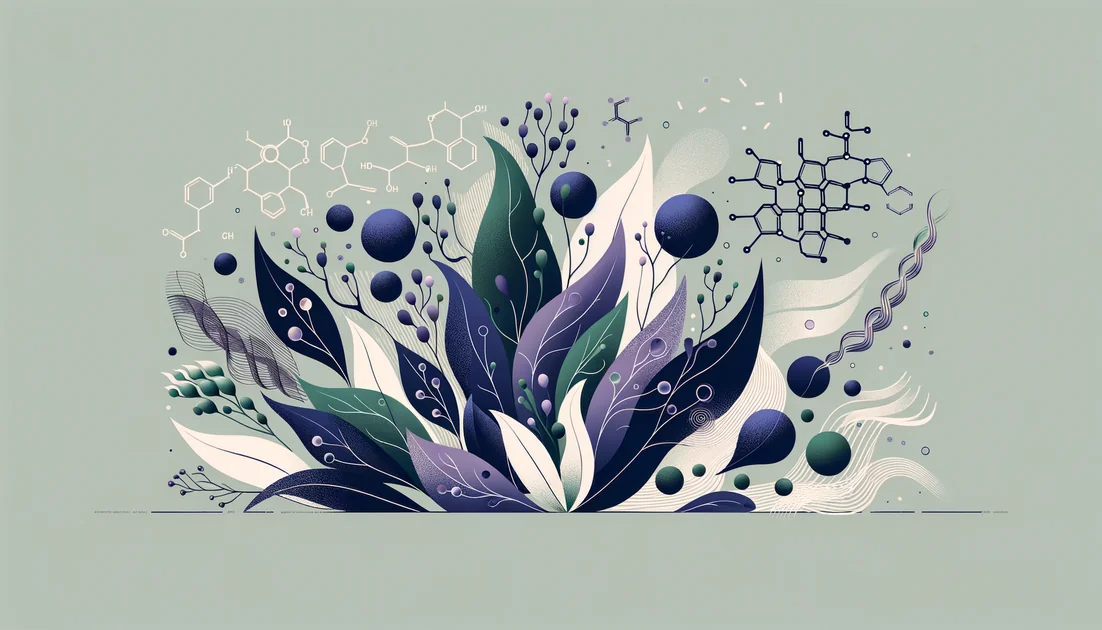
The Knife in the Fruit: How Papain Heals, Hurts, and Once Helped Crack the Code of Immunity
You're holding a green papaya. Inside its milky sap lives an invisible blade—papain—that can soften a steak, clear a wound, calm a cramping gut, and, in the wrong place, shred lung tissue. A century of science has been learning when to let that blade cut—and when to sheath it.
- Evidence
- Promising
- Immediate Effect
- Within hours for post-meal comfort (anecdotal); clinical benefits clearer with sustained use. → 2–6 weeks for digestive regularity (40-day trial).
- Wears Off
- Often within about a week after stopping (wash-out observed).
A blade made of fruit
In the late 1800s, chemists noticed that the sticky latex of unripe papaya dissolved meat. They named the active mystery "papain," and within decades it became a model enzyme for understanding how proteins are cut apart. By 1968, papain's 3D shape had been solved, turning it into a textbook guide for how cysteine proteases—enzymes with a sulfur-based "knife"—work.[1] That blade didn't just stay in the biochemistry lab. In 1959, Rodney Porter used papain to slice the Y-shaped antibody into clean pieces, revealing the gripping "arms" (Fab) that latch onto threats and the "stem" (Fc) that calls in immune reinforcements. As the Nobel committee later summarized, "He found that this indeed could be done with the aid of the protein-splitting enzyme papain."[2] The enzyme from a tropical fruit helped crack the architecture of immunity.
When dentistry whispers instead of drills
Fast-forward to a pediatric clinic. A child climbs into the chair, clutching a stuffed bear. Instead of the whine of a drill, a dentist paints on a papain gel, waits half a minute, and gently scoops out softened decay. The technique—chemo-mechanical caries removal—aims to spare healthy tooth and reduce pain. In randomized split-mouth trials in preschoolers, Papacárie (a papain gel) matched rotary drilling for removing infectious dentin and lowering bacterial counts, with kids keeping their own mouths as controls.[3] At 6 to 18 months, restorations held up as well or better than the traditional approach.[4] Acceptance was high in children with disabilities, where avoiding needles and noise matters even more.[5] As one trial concluded, "Papacarie is an excellent option for the minimally invasive removal of carious tissue."[3] Papain's trick here is surgical selectivity: it chews slumped, denatured collagen in rotten dentin yet spares firmer, living matrix—think of it as a locksmith that only turns in broken tumblers. Bonding to the cleaned surface for fillings remains comparable to standard care in lab tests.[7]
From kitchen table to gut feelings
You may have seen papain listed as a "digestive enzyme" on supplement shelves. In a double-blind, placebo-controlled trial, a whole-papaya preparation (Caricol®) taken daily for 40 days reduced constipation and bloating in volunteers with functional gut complaints; when people stopped, benefits faded within about a week—a classic "wash-out" pattern.[6] Athletes have explored protease blends that include small amounts of papain; several controlled trials suggest such mixes can modestly ease next-day soreness after eccentric exercise, though these effects are for blends rather than papain alone.[8][9] If you use papain for digestion, imagine switching on a set of tiny dishwashers alongside your own pancreatic enzymes—helping finish the job when meals are heavy or timing is off. The clinical signal is modest but real for whole-papaya preparations in functional discomfort; for pure papain alone, data are still thin.
The other edge of the blade
Every tool has a shadow. In 2008 the U.S. FDA ordered unapproved topical papain drugs off the market after serious allergic reactions, noting that these products "can produce harmful or near fatal effects including hypersensitivity resulting in anaphylactic reactions."[10] The risk is especially relevant for people with latex allergy, who often cross-react to papaya and papain—a latex-fruit syndrome documented both in lab tests and dramatic clinical episodes.[11][12] Workers breathing papain dust in factories have developed occupational asthma proven by inhalation challenges—immediate wheeze on contact, relief away from work.[13] In animal labs, researchers even instill papain into airways to mimic emphysema: elastic fibers snap, air sacs balloon, and lungs lose their spring.[14] The same property that tenderizes steak can, in the wrong tissue, erode the scaffolding of breath.[15] Even some folk uses come with caveats. Meat-tenderizer slurries (papain) for jellyfish stings have mixed human data: one randomized beach study found no pain benefit for Hawaiian box jellyfish,[17] while a separate model with a different species found small, short-lived reductions in pain and redness.[16] A Cochrane review sums it up bluntly: evidence is low certainty, and benefits are uncertain.[18]
Why culture kept the secret—and where science is taking it
Long before clinical trials, cooks and healers across the tropics wrapped tough meat in green papaya, dabbed latex on wounds, and ate the fruit for digestive ease. Modern wound care research partly validates the first and questions the second: papaya-based dressings can help lift dead tissue and freshen the wound bed, but the evidence is mostly case series, and unregulated papain ointments in the U.S. are off the market for safety and efficacy concerns.[19][10] Dentistry may be papain's most elegant modern niche: minimally invasive gels such as Papacárie and newer high-activity formulations use an old fruit enzyme to align care with the child's nervous system—quieter, gentler, and tooth-sparing.[3][4] Meanwhile, bioengineers are trying to harness the blade more safely by fixing papain onto dressings or nanoparticles so it stays put, works longer, and releases slowly. Chitosan-immobilized papain shows anti-biofilm activity and sustained stability in vitro, potentially boosting antibiotics against stubborn Staph communities.[21] Bacterial-cellulose and chitosan membranes can hold active papain while dialing down irritation—promising for future debridement dressings that cut only where clinicians intend.[20][22]
How to think with papain
For teeth: papain gels used by dentists can reduce drilling, anesthesia, and fear while achieving comparable clinical outcomes in kids, particularly useful in special-care settings.[3][4][5]
For digestion: whole-papaya preparations may ease constipation and bloating over weeks; stop and the effect may fade within days. Evidence for isolated papain alone or for athletic recovery remains modest and mix-dependent.[6][8][9]
For safety: avoid if you have latex or papaya allergy; never inhale powders; and in the U.S., don't self-treat wounds with topical papain drugs—no approved products exist because of safety and efficacy concerns.[10][11][13]
"He found that this indeed could be done with the aid of the protein-splitting enzyme papain."[2]
"These drugs can produce harmful or near fatal effects including hypersensitivity resulting in anaphylactic reactions."[10]
The same molecule that once parted an antibody to reveal our defenses can, with equal ease, dissolve the wrong tissue. Papain's story is a reminder: potency is not the same thing as goodness. It's a blade worth using—carefully.
Key takeaways
- •Papain's dental gel (Papacárie/Papacarie) performs comparably to drilling for removing carious dentin in children, with restorations holding up over 6–18 months and less pain reported.
- •For digestion, evidence comes from a daily whole-papaya preparation taken ~4–6 weeks: constipation and bloating improved during use, then faded about a week after stopping.
- •Enzyme blends that include papain can modestly reduce post-exercise soreness in small trials; effects are for blends, not papain alone, and expectations should be modest.
- •Timing matters: take a papaya preparation consistently each day and reassess after about one month; dental gels are clinician-applied.
- •Safety first: people with papaya or latex allergy can cross-react to papain (reactions can be severe), and airborne exposure has triggered occupational asthma; jellyfish-sting benefits are inconsistent and species-specific.
You might also like
Explore more of our evidence-led investigations, comparisons, and guides across every article style.

Swanson Health Products
The Value-Driven GMP Operator: Big Savings, Big Gaps in Transparency

Whey protein (concentrate/isolate/hydrolysate) vs Plant protein (pea/soy/rice blends)
Pick whey if you want the most leucine and lean-mass support per scoop and you tolerate dairy; pick plant protein if you're vegan/dairy-sensitive—just use a blend or slightly larger dose to match leucine.


Chlorella
In the anxious years after World War II, scientists imagined algae farms perched on skyscrapers, piping emerald paste into kitchens to end world hunger. The star ingredient was a tiny freshwater sphere named Chlorella—so efficient at turning light into food that policy makers briefly considered it a planetary rescue plan. Then came reality, and even a memorable nickname: "the gag factor."[1][16]


Tocotrienols
The stealthier cousins of vitamin E—built with springy tails that move differently in cell membranes and behave differently in your body.

